Bluefin tuna – an iconic example for recovery
Bluefin tuna is known for its size and price. A new management strategy is to ensure the long-term sustainable management of the stocks in the Atlantic.
The High Seas Treaty, a landmark agreement on the protection of 30% of the oceans by 2030, marks a significant milestone in global efforts to safeguard marine biodiversity. After years of negotiations, the treaty enables the establishment of Marine Protected Areas (MPAs) on the high seas, promising a brighter future for our oceans. MPAs have proven benefits, with increased biomass supporting biodiversity, food security, and sustainable fishing practices. However, some critics argue that MPAs alone may not address all of the ocean's challenges, such as climate change and pollution. Despite challenges, progress is being made, and the 30x30 objective is driving international action towards ocean protection. Quality of MPAs and sustainable practices will be key to ensuring a successful #Blue Revolution and unlocking the oceans' vast potential for the benefit of all.
At COP15 in December 2022, the Kunming-Montreal Global Biodiversity Framework (GBF) was agreed, setting out four goals and 23 targets for 2030. Most notably, the framework aims to ensure that at least 30% of the terrestrial, inland water, and of coastal and marine areas are protected. Only three months later, after fifteen years of negotiations, the High Seas Treaty was agreed, creating the legal mechanism required to set up Marine Protected Areas (MPA) on the high seas.

The benefits of MPAs are easily summarized. Biomass within MPAs increases on average by an impressive 600%. This benefits not only biodiversity but also food security and fishermen, who can harvest the excess biomass spilling over the MPA’s borders. And even carbon emissions can be decreased through reduced bottom trawling, which would otherwise release carbon dioxide from the sediment of the sea floor. Below you can see heatmaps indicating in yellow and green which parts of the ocean are most worthy of our protection for each of the benefits discussed. The graphs below further show what additional fraction of the oceans must be protected for each of the benefits to materialize (existing fully protected areas are indicated in light blue).
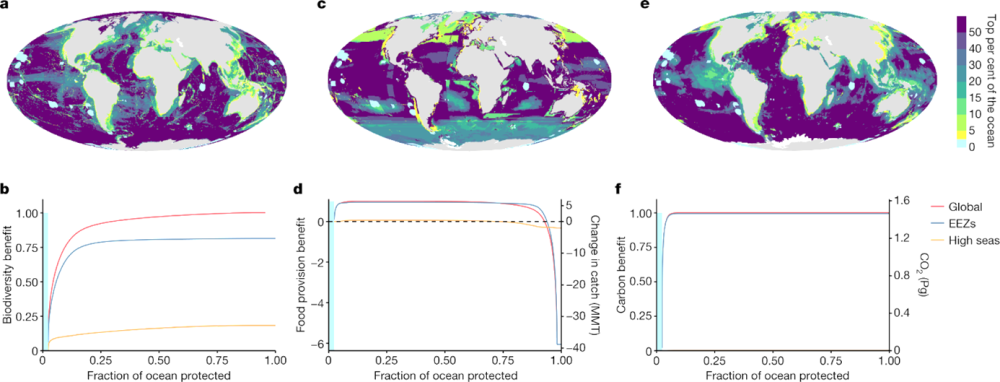
Despite their clear benefits, MPAs may not actually be the right answer to many of the ocean’s problems. Ray Hilborn, a well-known oceanographer, thinks that permanently closing 30% of the oceans is the wrong thing to do. “With climate change, things are shifting.” “If you had closed areas to protect northern right whales 20 years ago, they’d be in all the wrong areas,” he told SeafoodSource.
In addition, the biggest threats to the ocean do not actually originate there. Ocean acidification, climate change, invasive species, plastic pollution, and land runoff cannot be impacted by MPAs. A great example is the large dead zone that forms in the Gulf of Mexico every year. “You could make it an MPA and ban everything, you could ban shipping, you could ban mining, you could ban fishing, and you’d have no effect on the dead zone.”
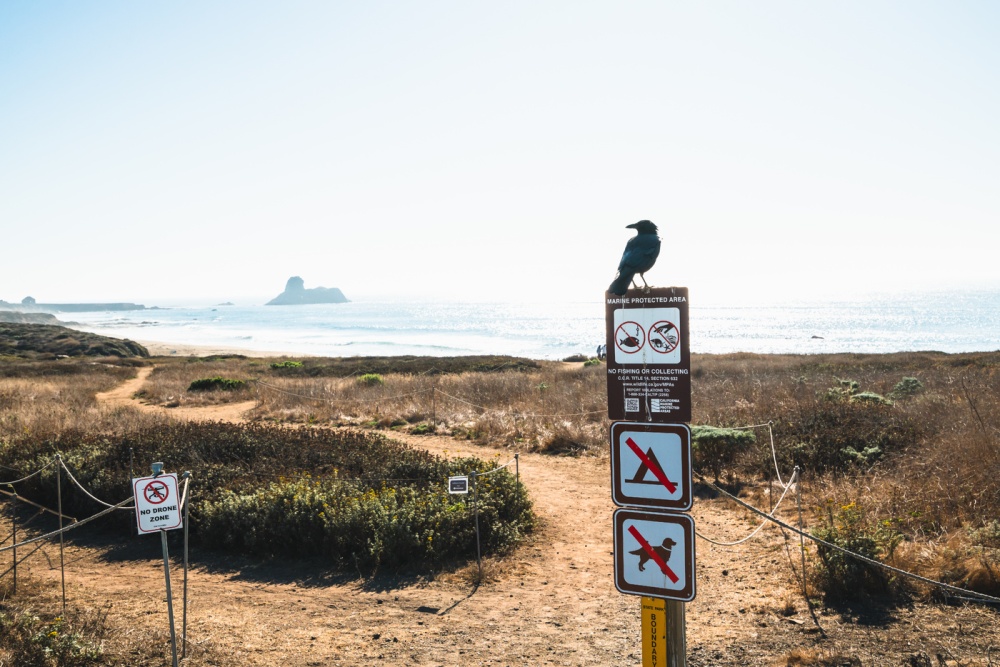
Despite its simplicity, the 30x30 objective certainly does not lack ambition. As of today, only 6.6% of the ocean are protected, that is 14.6% of coastal waters under national jurisdiction, and 1.5% of international waters under collective management. An interactive map of protected waters cans be accessed on the website of Marine Conservation Institute.
Considering that under the Aichi targets from 2010, 10% of coastal and international waters should already be protected since 2020, actual progress has been rather slow. If we continue at the same pace, 15x30 seems like a more realistic target. Not to mention that the treaty only formally enters into force once all 60 parties actually ratified it, which may delay things further, although many countries are already taking unilateral action.
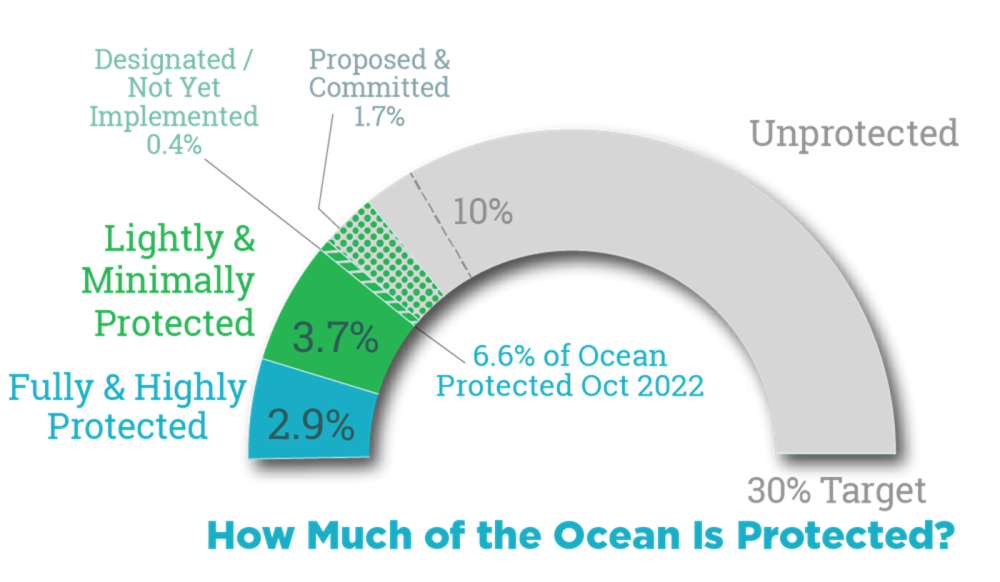
Besides their quantity, quality of MPAs may also become an issue. Contrary to expectations, MPAs nowadays do not actually require companies to cease economic activities in those areas. Fisheries in MPAs, such as bottom trawling by crab and mussel fishermen in the Wadden Sea National Park, can even be MSC-certified. While counterintuitive, this seems like a reasonable decision, given that recent studies attribute this specific area very high resilience towards fishing pressures. In general, though, the overexploitation of this lenience is certainly a risk that must be monitored closely going forward.
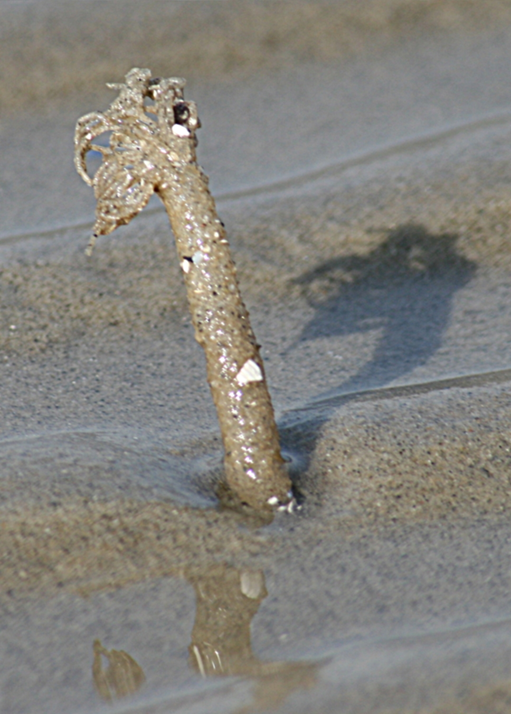
At Bonafide, we appreciate the fact that once more decisive progress has been made to further the protection of the oceans, and with it, the basis of numerous livelihoods (not least in the aquaculture industry). We recognize that the world is gradually waking up to the significance of our oceans, for biodiversity, the climate, our food systems, labor, medicine and more. And we’ve just only glimpsed the surface. If we learn to utilize the seas sustainably, much more is yet to come.
At Bonafide, we have been involved with the ocean for over 10 years. The progress in aquaculture technology, for example, is amazing. Nevertheless, we are only at the beginning of the development, but the attention from politics, institutions as well as the population is increasing and this makes us happy.
Get in the same boat with us and discover the potential of the oceans.
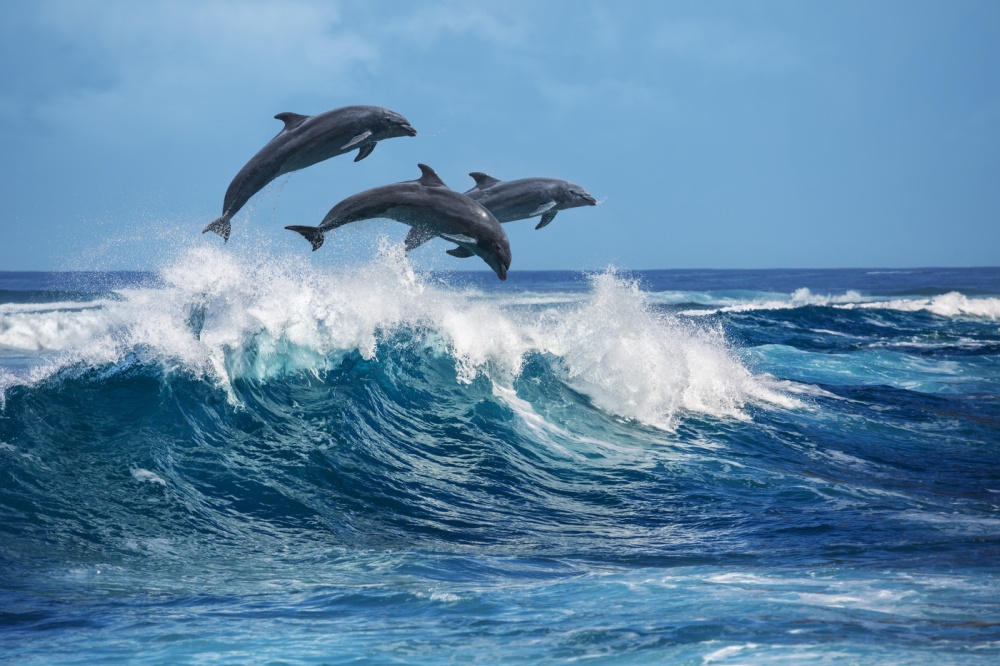
Comments